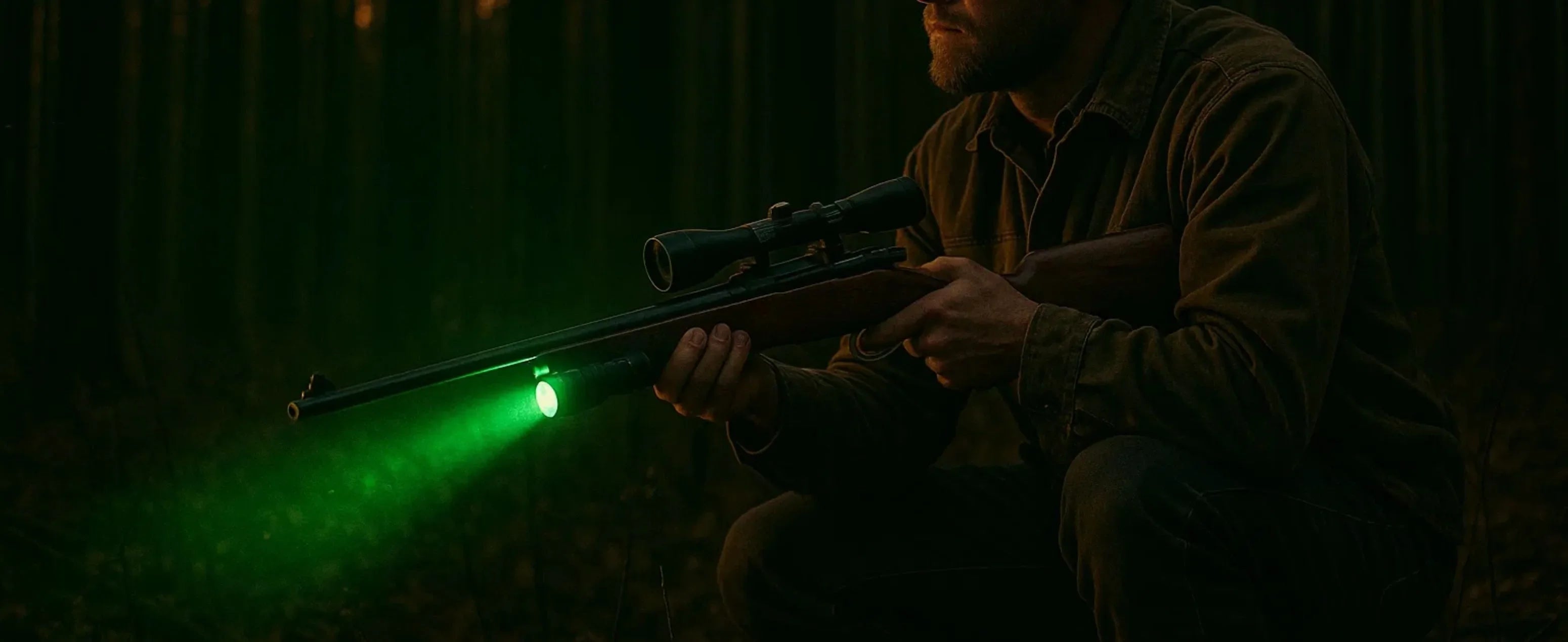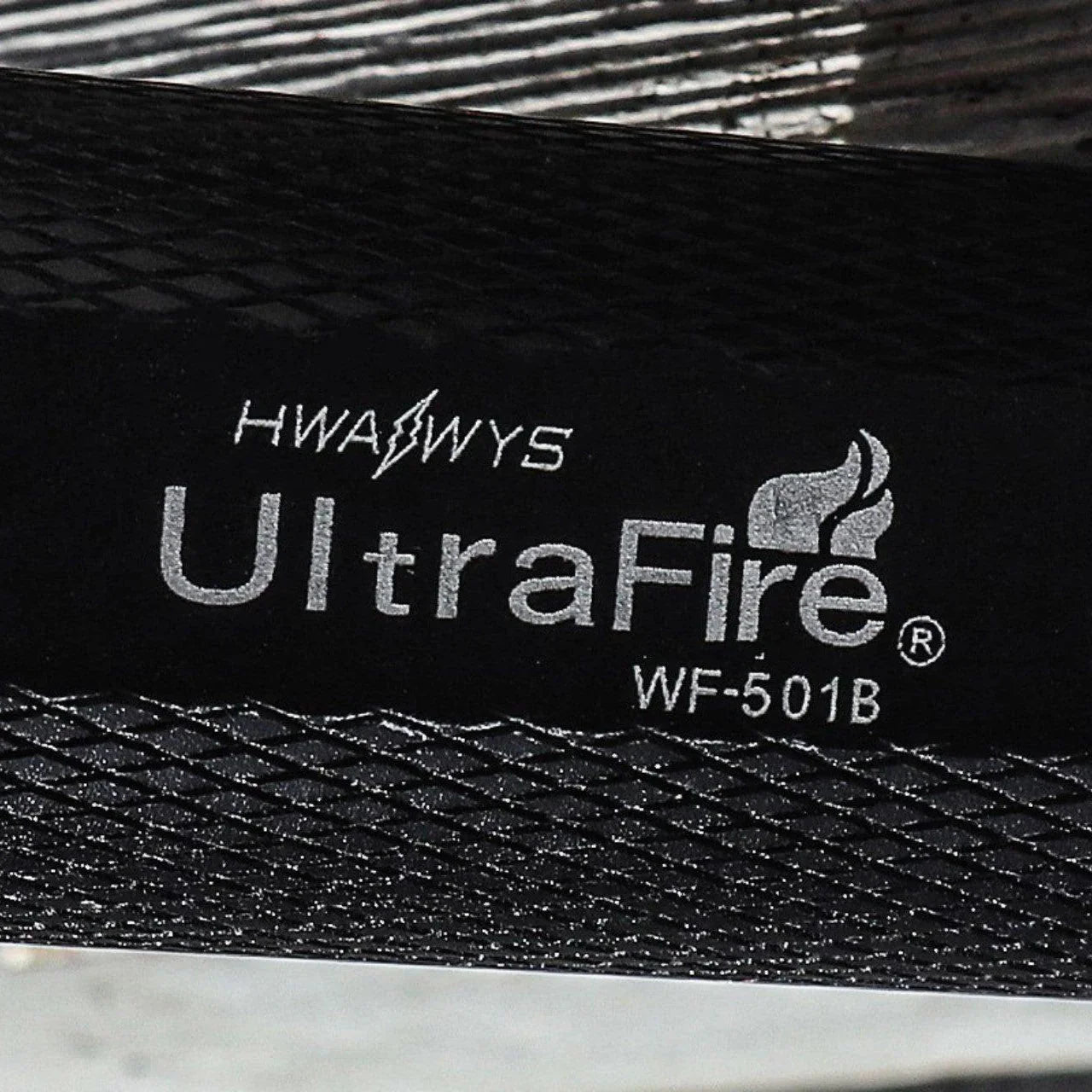UltraFire emphasizes quality (20 years’ experience, 3‑year warranty) as a foundation for their tactical flashlights. Brightness (lumens) is the key spec: general use usually starts around 200–300 lumens, while serious tactical or defensive use often calls for about 1000 lumens or more. For example, experts note that a 1000-lumen beam can briefly blind an attacker. Below is a quick overview followed by a deeper guide to lumen ranges, real-world output, and UltraFire model recommendations.
-
General/Everyday Use: ~200–300 lumens. Good for routine tasks around home or short-range visibility.
-
Self-Defense / Home Defense: ~500–1000+ lumens. 1,000+ lumens can temporarily disorient threats. UltraFire’s WF-501B (1000LM) is a common baseline for tactical lights.
-
Law Enforcement / Military: ~1250–2500 lumens. Powerful beams for long-range visibility and blinding effect.
-
Camping / Outdoor Use: ~300–980 lumens. Bright enough to illuminate trails and campsite.
-
Search & Rescue / Heavy-Duty: 3000+ lumens. Intense illumination for very large areas or high-altitude tasks. UltraFire’s high-output LR1 reaches ~3100LM.
Each use-case has a “sweet spot.” For example, Nitecore advises 300–900 lumens for camping and 1250–2500 lumens for hunting or law-enforcement work. For everyday carry, even 50–300 lumens can be useful, but multi-mode tactical lights let you crank it up when needed. In short, a good tactical flashlight will deliver at least a few hundred lumens, with ~1000 lumens as a practical minimum for self-defense.
Raw Lumens vs. Actual (Usable) Output
Not all lumen numbers are equal. Manufacturers often quote raw lumens – a theoretical peak brightness (typically the sum of all LED outputs under ideal conditions). In practice, LEDs heat up and optics absorb light, so the effective (measured) lumens can be 10–50% lower. For example, MotorTrend explains that a flashlight rated 2000 raw lumens might only deliver ~1000 effective lumens once warmed up. ECCO’s lighting guide similarly notes that “effective lumens” account for 30‑minute usage losses (thermal and optical) versus the initial “raw lumen” figure.
-
Raw (Initial) Lumens: The maximum light output measured at startup in ideal conditions.
-
Effective (Measured) Lumens: The real-world output after the light warms up and losses occur.
Because of this, caveat emptor: a 2000-lumen spec isn’t always 2000 lumens of sustained light. A well-made tactical flashlight will manage heat and optics to maximize effective lumens. UltraFire flashlights use quality LEDs and heat-sink designs to deliver most of their rated brightness.
Recommended UltraFire Flashlight Models by Brightness
UltraFire offers tactical lights across the lumen spectrum. All models use rugged aircraft‑grade aluminum bodies and have features like strobe modes and holster attachments typical of tactical gear. Below are sample UltraFire models in each brightness tier:
-
~800–1000 lumens (Entry-Level):
-
UltraFire WF-501B Tactical Flashlight – 1000LM (affordable, belt-clip kit).
-
UltraFire C8 Tactical Flashlight – 1000LM.
These are ideal for EDC, home use, and basic defense.
-
-
1200–2000 lumens (Mid-Range):
-
UltraFire UF-2220B Tactical Flashlight – 1200LM.
-
UltraFire WF-502D Slim Flashlight – 1300LM (slim form factor).
-
UltraFire T4 Rechargeable Flashlight – 1200LM Zoomable.
-
UltraFire T5 Rechargeable Tactical Flashlight – 1800LM.
-
UltraFire C15 Rechargeable – 2000LM.
This tier suits camping, medium-range searches, and stronger deterrent uses.
-
-
2000–3000+ lumens (High-Output):
The UltraFire WF-501B (shown) is a classic 1000LM tactical flashlight. It’s compact yet bright enough for self-defense and everyday tasks. Higher-output models (like the LR1 at ~3100LM) cover law-enforcement use-cases.
In each range, UltraFire lights combine high lumen output with practical design (strobes, zoom/flood modes, rechargeable batteries). For instance, the C8 and WF-501B (1000LM each) are very affordable and widely used, while the T5 (1800LM, USB-C rechargeable) adds convenience. When shopping, also check beam distance and runtime: a light with 1000 lumens and a focused throw (high candela) can reach farther than a wide flood, even at the same lumen count.
Key Takeaways:
-
Use Case Dictates Brightness: Households and casual use need only a few hundred lumens, but self-defense and professional use demand ~1000–2500+ lumens
-
Raw vs. Real Output: Don’t assume “2000 lumens” means 2000 LM of usable light – effective output is usually lower. Look for reputable specs or reviews to gauge true brightness.
-
UltraFire Ranges: UltraFire offers models at every level. For example, the WF-501B and C8 (1000LM) cover basic tactical needs, the C15 (2000LM) and T5 (1800LM) cover mid-range, and the V7 (2300LM) or LR1 (3100LM) meet extreme requirements. All models reflect UltraFire’s quality build.
By matching the lumen output to your intended use, you can select the right UltraFire tactical flashlight. Whether you need a reliable light for camping, daily carry, or an ultra-bright beam for security, understanding lumens and comparing UltraFire’s model specs will guide you to the best choice.
Sources: Authoritative guides on flashlight lumens and UltraFire product data, and UltraFire’s official specifications.







